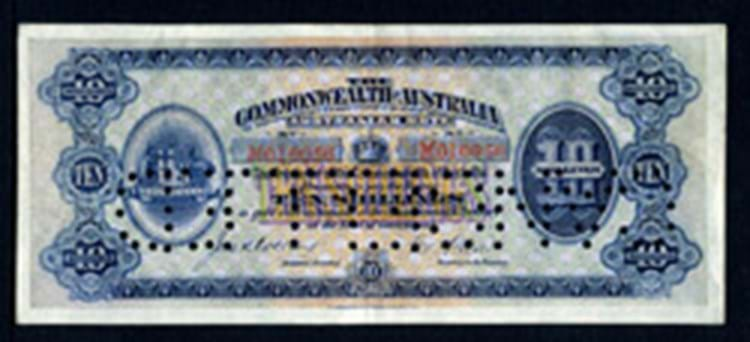
It was also feared that the release of a ten-shilling note (the lowest denomination note issued by any government within the British Empire) would spread disease from the lower to the middle and upper classes.
Distribution of the earliest specimen notes was strictly limited - generally to reciprocating government banks, law enforcement agencies including Scotland Yard and major museums within Australia. In 1922 a set was even laid under the foundation stone of the new Commonwealth Bank in Collins Street, Melbourne.
Very few ever made it into the hands of private individuals.
Quite how a superbly preserved set of the full 1913-1914 Commonwealth of Australia issue ended up in a chest of drawers in a North Yorkshire home is unknown. The elderly owner could shed little light on their history; indeed he had been unaware of their existence until he was told by the auctioneer who had cleared his house that a windfall was coming his way.
Recognising that this was a rarefied market, Rodney Tennant of Tennants of Leyburn had asked London coins and banknote specialists Spink to sell the six notes - all with early serial numbers and all marked Cancelled.
They comprised the offending 10 shillings (serial number M010056), £1 (serial number P008055), £5 (serial number U067927) £20 (serial number X000018), £50 (serial number Y005495) and £100 (serial number Z006944). The three lower denominations are all rarities (all were subject to extensive forging and had been replaced by a different design by 1914), while the £20, £50 and £100 are among just a handful recorded.
Spink offered them (in the separate catalogue) as lot number one of their banknotes sale of September 28. They did not quite make their £400,000-450,000 estimate, but the vendor's family was delighted to learn that they had sold to an Australian private collector at £350,000.
A case of champagne soon made its way to Leyburn.
By Roland Arkell




